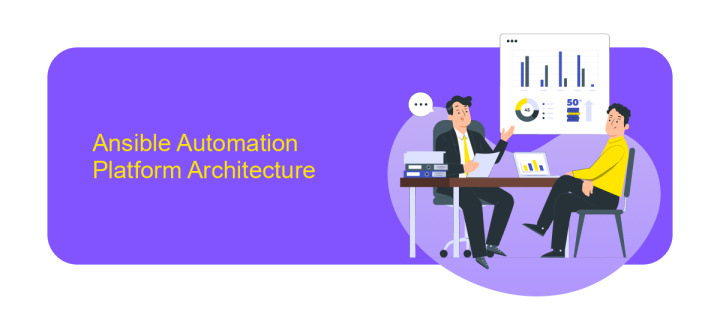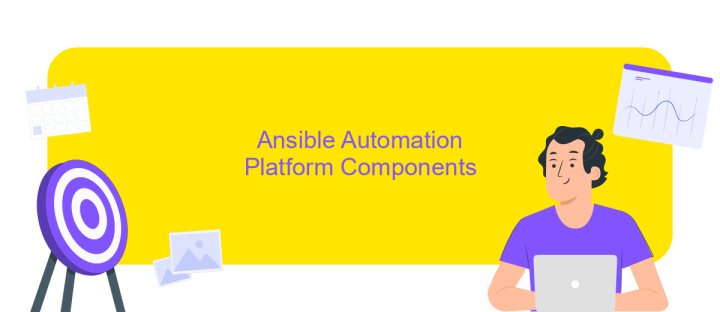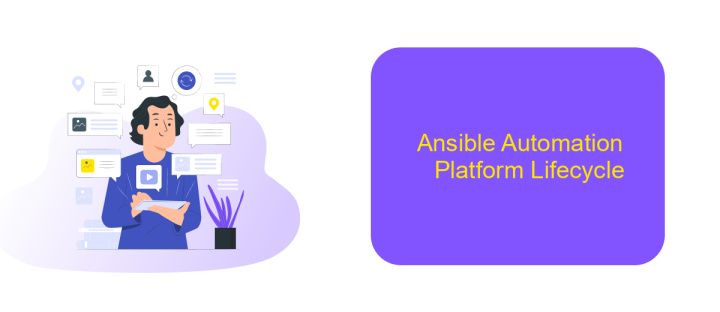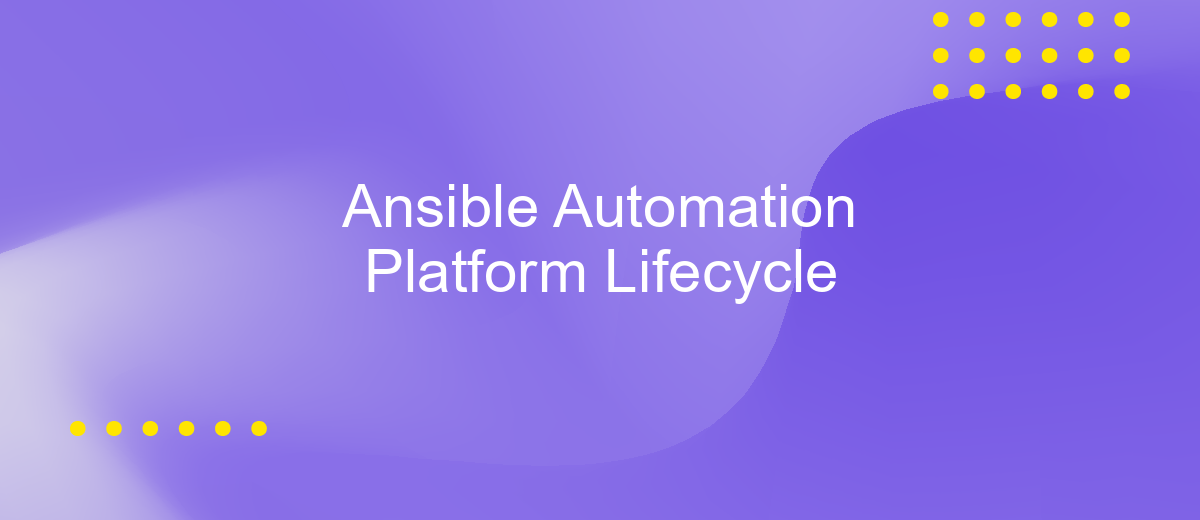Ansible Automation Platform Lifecycle
The Ansible Automation Platform Lifecycle is a comprehensive guide to managing the various stages of automation within your IT environment. From initial deployment and configuration to ongoing maintenance and scaling, this article provides insights and best practices to ensure your automation efforts are efficient, secure, and sustainable. Dive in to explore how Ansible can streamline your operations and drive innovation.
Introduction
Ansible Automation Platform Lifecycle provides a structured approach to managing the life cycle of automation projects. This ensures that every phase, from planning to decommissioning, is handled efficiently and effectively. By following a well-defined life cycle, organizations can maximize the benefits of automation while minimizing risks and complexities.
- Planning: Define objectives, scope, and requirements.
- Design: Create detailed automation plans and workflows.
- Development: Implement the automation scripts and playbooks.
- Testing: Validate the functionality and performance of automation.
- Deployment: Roll out the automation to the production environment.
- Maintenance: Monitor, update, and optimize the automation.
- Decommissioning: Safely retire outdated or obsolete automation.
Understanding and adhering to the Ansible Automation Platform Lifecycle is crucial for achieving sustainable and scalable automation solutions. Each phase is interdependent, and skipping any step can lead to potential issues down the line. By embracing this lifecycle, organizations can ensure their automation initiatives are robust, reliable, and ready to adapt to changing needs.
Ansible Automation Platform Architecture

Ansible Automation Platform is designed to streamline and manage complex IT environments through a modular architecture that integrates various components. At its core, the platform includes Ansible Engine, which executes playbooks to automate tasks, and Ansible Tower, which provides a web-based interface for managing and scheduling tasks, as well as role-based access control and reporting. These components work together seamlessly to offer a comprehensive solution for IT automation, making it easier to manage configurations, deployments, and orchestration across diverse environments.
In addition to its core components, Ansible Automation Platform supports integrations with a wide range of third-party services and tools to enhance its functionality. For example, ApiX-Drive can be utilized to facilitate automated data transfers and synchronize tasks between Ansible and other software applications, ensuring smooth and efficient workflows. This capability allows organizations to extend their automation processes beyond traditional boundaries, integrating various services and applications into a unified automation strategy, thereby improving operational efficiency and reducing the potential for human error.
Ansible Automation Platform Components

Ansible Automation Platform is a comprehensive suite designed to streamline and enhance IT automation processes. It includes a variety of components that work in harmony to deliver scalable and reliable automation solutions. These components not only simplify the management of IT environments but also ensure consistency and efficiency across different systems and applications.
- Ansible Engine: The core automation tool that executes playbooks and manages configurations.
- Ansible Tower: A management interface that provides a visual dashboard, role-based access control, and job scheduling.
- Ansible Galaxy: A repository for sharing and downloading Ansible roles and collections.
- Automation Hub: A centralized platform for accessing certified Ansible content from Red Hat and its partners.
- Automation Analytics: A tool for analyzing and reporting on the performance and usage of automation tasks.
These components collectively form a robust framework that enables organizations to automate complex workflows, improve operational efficiency, and reduce human error. By leveraging the Ansible Automation Platform, teams can achieve greater agility and responsiveness in their IT operations, ultimately driving innovation and growth.
Ansible Automation Platform Lifecycle

Ansible Automation Platform Lifecycle encompasses the stages through which the platform evolves, ensuring robust and efficient automation capabilities. This lifecycle is designed to facilitate continuous improvement and adaptation to changing technological landscapes, providing a structured approach to managing automation workflows.
The lifecycle begins with the planning phase, where objectives and requirements are defined. This is followed by the development phase, involving the creation and testing of automation playbooks and roles. Next is the deployment phase, where the automation solutions are implemented across the infrastructure. Finally, the maintenance phase ensures ongoing support and optimization of the automation processes.
- Planning: Define objectives and requirements
- Development: Create and test playbooks and roles
- Deployment: Implement solutions across infrastructure
- Maintenance: Provide ongoing support and optimization
Each phase is critical for the overall success of the Ansible Automation Platform. By adhering to this lifecycle, organizations can achieve greater efficiency, reduce operational risks, and maintain a high level of automation quality. Continuous feedback and iteration are key components, ensuring that the platform evolves in alignment with organizational needs and technological advancements.
- Automate the work of an online store or landing
- Empower through integration
- Don't spend money on programmers and integrators
- Save time by automating routine tasks
Conclusion
In conclusion, the Ansible Automation Platform Lifecycle offers a robust framework for managing IT infrastructure and application deployment. By automating repetitive tasks and ensuring consistency across environments, it significantly reduces the risk of human error and increases operational efficiency. The platform's modular design allows for easy scalability, making it suitable for organizations of all sizes. Furthermore, its extensive library of modules and plugins ensures that users can tailor the platform to meet their specific needs.
For those looking to enhance their automation workflows, integrating with services like ApiX-Drive can provide additional flexibility and functionality. ApiX-Drive facilitates seamless integration between various applications and services, allowing for more streamlined and efficient processes. By leveraging such integrations, organizations can further optimize their automation strategies, ensuring that they remain agile and responsive in a rapidly evolving technological landscape. Ultimately, the Ansible Automation Platform Lifecycle, combined with effective integration tools, empowers organizations to achieve greater control and efficiency in their IT operations.
FAQ
What is the Ansible Automation Platform Lifecycle?
How often are updates released for the Ansible Automation Platform?
What happens when an Ansible Automation Platform version reaches end-of-life?
Can I automate the integration of Ansible Automation Platform with other tools?
How do I stay informed about the Ansible Automation Platform Lifecycle?
Apix-Drive is a universal tool that will quickly streamline any workflow, freeing you from routine and possible financial losses. Try ApiX-Drive in action and see how useful it is for you personally. In the meantime, when you are setting up connections between systems, think about where you are investing your free time, because now you will have much more of it.


